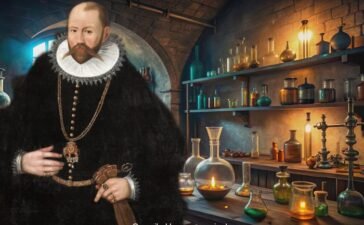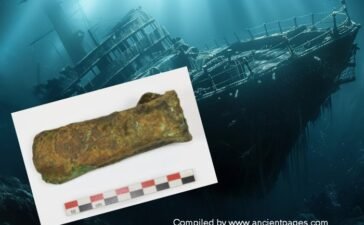Jan Bartek – AncientPages.com – Scientists have conducted a fascinating study on the remains of 25 individuals buried between the 12th and 15th centuries in the castle at Zorita de los Canes, Guadalajara. After exhuming the remains from the castle’s cemetery, the research team uncovered valuable insights into the diet, lifestyle, and causes of death of these warrior monks from the Order of Calatrava.
The remains were exhumed from the cemetery of the castle of Zorita de los Canes, in Guadalajara. Credit: Carme Rissech, URV
The castle of Zorita de los Canes, located on a bend of the Tagus River in the province of Guadalajara, is of significant historical importance. Its origins date back to 852 when the emir Mohammed I of Cordoba commissioned its construction as a defensive fortress against Christian attacks. Over time, the castle changed hands twice until it was conquered by the Knights Templar in 1124.
In 1174, Alfonso VIII of Castile granted the fortress to the newly established Order of Calatrava, a Cistercian military and religious order. Their primary responsibility was to defend the border, then marked by the Tagus River, from incursions by the Almohads. The castle’s strategic location made it a crucial defensive outpost, pivotal in the ongoing conflicts between Christian and Muslim forces during that era.
The study, conducted by the Universitat Rovira i Virgili (URV) and the Max Planck Institute, revealed that 23 of the individuals died in battle, shedding light on the hazardous nature of their lives. Interestingly, the analysis of their diet indicated that these warrior monks followed a diet typical of medieval high society, with a considerable intake of animal protein and marine fish despite being located far from the coast.
Notably, one unexpected finding was the identification of the remains of a woman among the warrior monks by Carme Rissech, a researcher at the URV. This discovery adds an intriguing layer to the understanding of the composition and dynamics of the Order of Calatrava during that period.
Credit: Adobe Stock – OpticalDesign
The MONBONES project, which focuses on studying diet and lifestyle in monasteries during the Middle Ages, has yielded fascinating insights into the lives of individuals who resided in a castle between the 12th and 15th centuries. Carme Rissech, a researcher at the URV’s Department of Basic Medical Sciences, initially doubted that the remains she received were those of Calatrava knights. However, her team uncovered valuable information about these individuals through a comprehensive analysis.
The project partners analyzed the presence of carbon isotopes 14 and nitrogen 15 in the bones of 25 individuals and animal remains around the castle. This approach provided complementary information about the dietary habits and lifestyles of the castle’s inhabitants during that period.
Once Rissech obtained the remains in the laboratory, she conducted a thorough examination to determine the individuals’ age, sex, morphology, and health. Additionally, she aimed to uncover details about their lifestyles and potential causes of death. This multifaceted analysis has shed light on the living conditions and practices of those who called the castle home centuries ago.
Skull found in the archaeological site of Zorita de los Canes. Credit: Carme Rissech, URV.
Out of the total sample, 23 skeletons exhibited markings consistent with violent deaths. These markings primarily consisted of penetrating puncture wounds and blunt force trauma, indicating the use of weapons prevalent during that era. Notably, these injuries were concentrated on areas of the body that were vulnerable and unprotected against such weapons
“We observed many lesions on the upper part of the skull, the cheeks, and the inner part of the pelvis, which is consistent with the hypothesis that we are dealing with warriors,” explains Rissech, who, by studying the bone proportions, realized that among the warriors, there was a woman.
The skeletal remains of males and females exhibit distinct characteristics that aid in determining their sex. As Rissech explains, “The morphology of the facial bones and the pelvis are the most obvious examples.” However, these features may not provide a definitive conclusion for some individuals. In the case of these particular remains, the sex-specific traits were pronounced, leaving little ambiguity about the individual being female. This discovery raises intriguing questions: Who was this woman? Was she affiliated with the order? Did she hold the same status as the other knights buried at the site?
Part of the site from which the remains were recovered. Credit: Carme Rissech, URV.
The discovery of the woman’s remains has sparked intriguing discussions among researchers. On the one hand, the nature of her injuries suggests she participated in the battle and potentially wore armor or chainmail, meeting a fate similar to male knights. However, her dietary analysis revealed a lower protein intake, which could indicate a lower social status within the group.
While some hypotheses propose she may have been a servant called upon for defense, the researcher from the Universitat Rovira i Virgili (URV) dismisses this notion and argues that the physical demands of servant work would have left identifiable markers on her bones, which are absent in this case.
The woman’s skeletal remains exhibited characteristics akin to those of the other warrior monks, whose roles necessitated rigorous training in swordsmanship. This type of physical activity leaves discernible markings on the bones, which were also evident in the female remains. These findings suggest that she engaged in martial practices like her male counterparts.
See also: More Archaeology News
“I believe that these remains belong to a female warrior, but further analysis is needed to determine to what extent this woman is contemporary with the other knights,” says Rissech. According to the researcher, we should picture her as a warrior of about forty years of age, just under five feet tall, neither stocky nor slender, and skillful with a sword.
The study was published in Scientific Reports
Written by Jan Bartek – AncientPages.com Staff Writer










